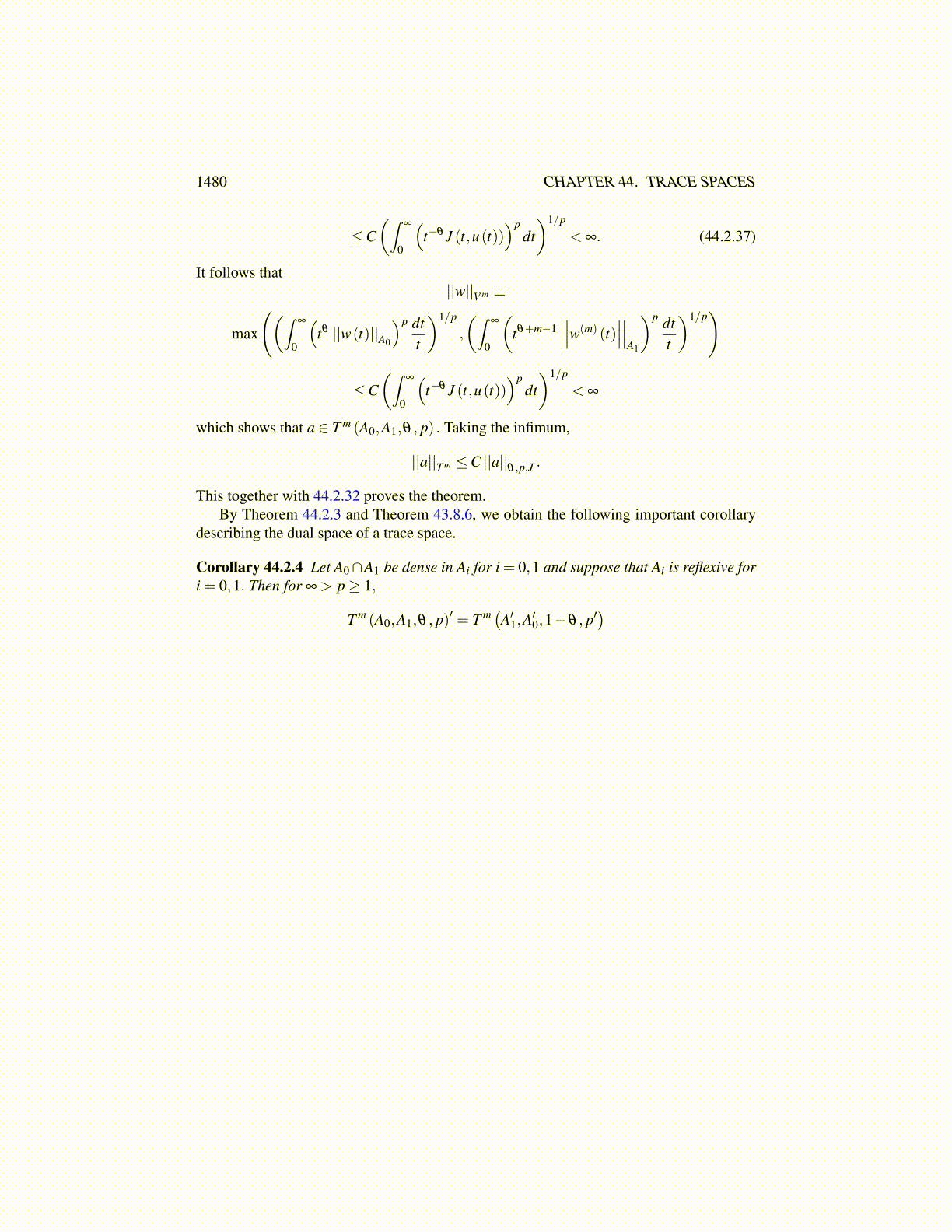
1480 CHAPTER 44. TRACE SPACES
≤∫
∞
0
(∫∞
0
((tθ+m−1
sm
)|φ (s)|
∣∣∣∣∣∣u(m)( t
s
)∣∣∣∣∣∣A1
)p dtt
)1/pdss
≤∫
∞
0
|φ (s)|sm
(∫∞
0
(tθ+m−1
∣∣∣∣∣∣u(m)( t
s
)∣∣∣∣∣∣A1
)p dtt
)1/p dss
=∫
∞
0
|φ (s)|sm sθ+m−1
(∫∞
0
(τ
θ+m−1∣∣∣∣∣∣u(m) (τ)
∣∣∣∣∣∣A1
)p dτ
τ
)1/p dss
=C(∫
∞
0
(τ
θ+m−1∣∣∣∣∣∣u(m) (τ)
∣∣∣∣∣∣A1
)p dτ
τ
)1/p
. (44.2.28)
Now from the estimates on the two terms in 44.2.26 found in 44.2.27 and 44.2.28, and thesimple estimate,
2max(α,β )≥ α +β ,
it follows
||a||θ ,p,J (44.2.29)
≤ C max
((∫∞
0
(τ
θ ||u(τ)||A0
)p dτ
τ
)1/p
(44.2.30)
,
(∫∞
0
(τ
θ+m−1∣∣∣∣∣∣u(m) (τ)
∣∣∣∣∣∣A1
)p dτ
τ
)1/p)
(44.2.31)
which shows that after taking the infimum over all u whose trace is a, it follows a ∈(A0,A1)θ ,p,J .
||a||θ ,p,J ≤C ||a||T m (44.2.32)
Thus T m (A0,A1,θ , p)⊆ (A0,A1)θ ,p,J .Is (A0,A1)θ ,p,J ⊆ T m (A0,A1,θ , p)? Let a ∈ (A0,A1)θ ,p,J . There exists u having values
in A0∩A1 and such that
a =∫
∞
0u(t)
dtt=∫
∞
0u(
1t
)dtt,
in A0 +A1 such that∫∞
0
(t−θ J (t,u(t))
)pdt < ∞, where J (t,a) = max
(||a||A0
, t ||a||A1
).
Then let
w(t)≡∫
∞
t
(1− t
τ
)m−1u(
1τ
)dτ
τ= (44.2.33)
∫ 1/t
0(1− st)m−1 u(s)
dss
=∫ 1
0(1− τ)m−1 u
(τ
t
) dτ
τ. (44.2.34)